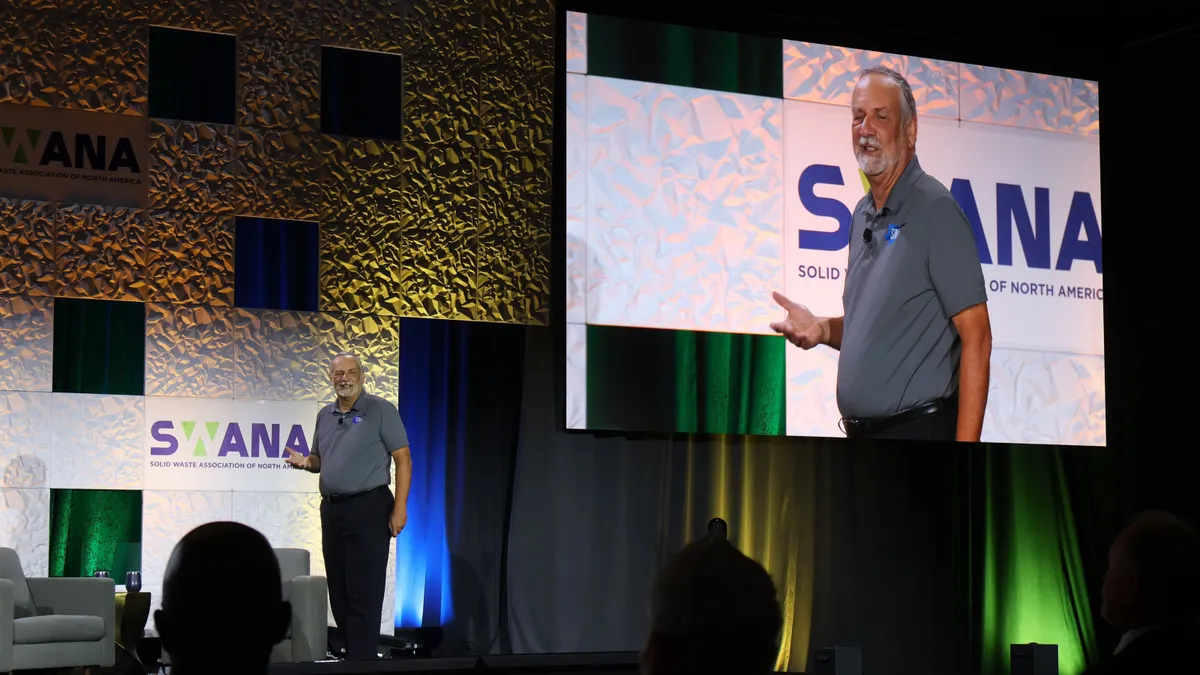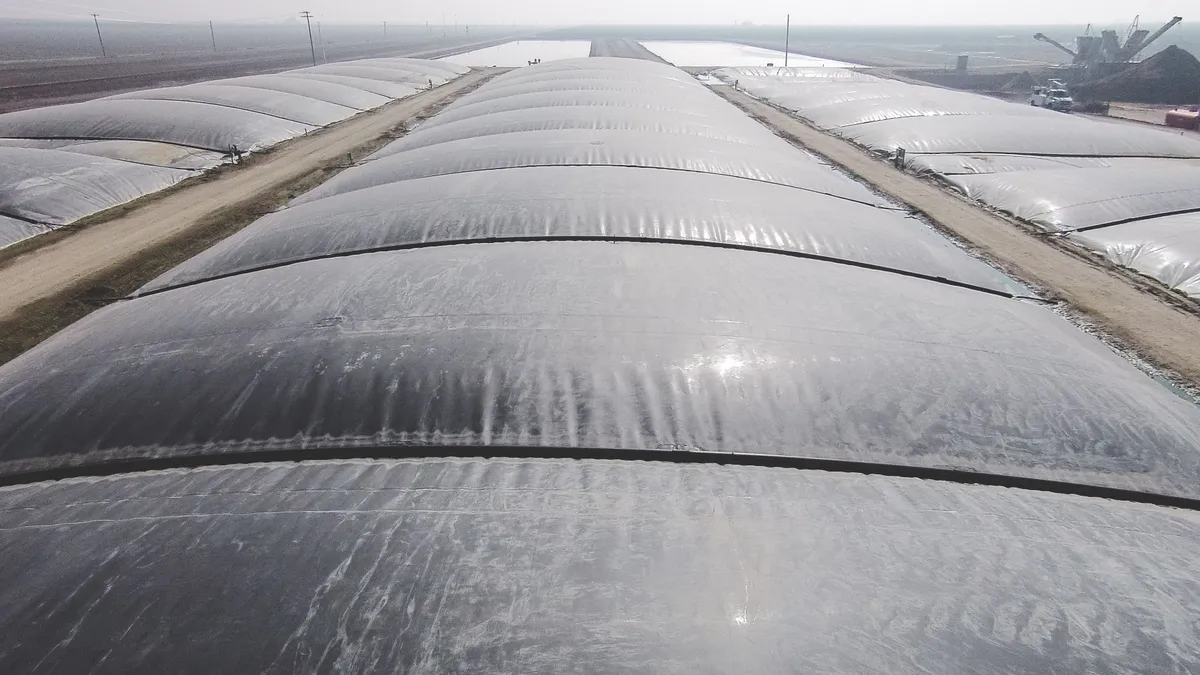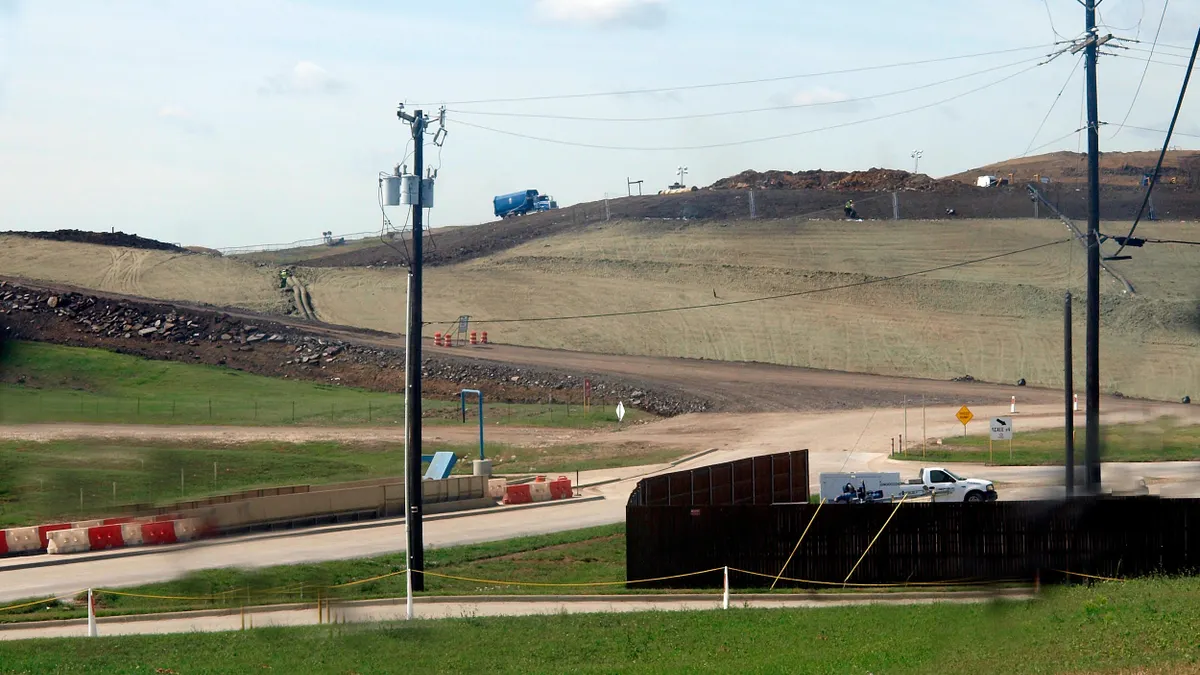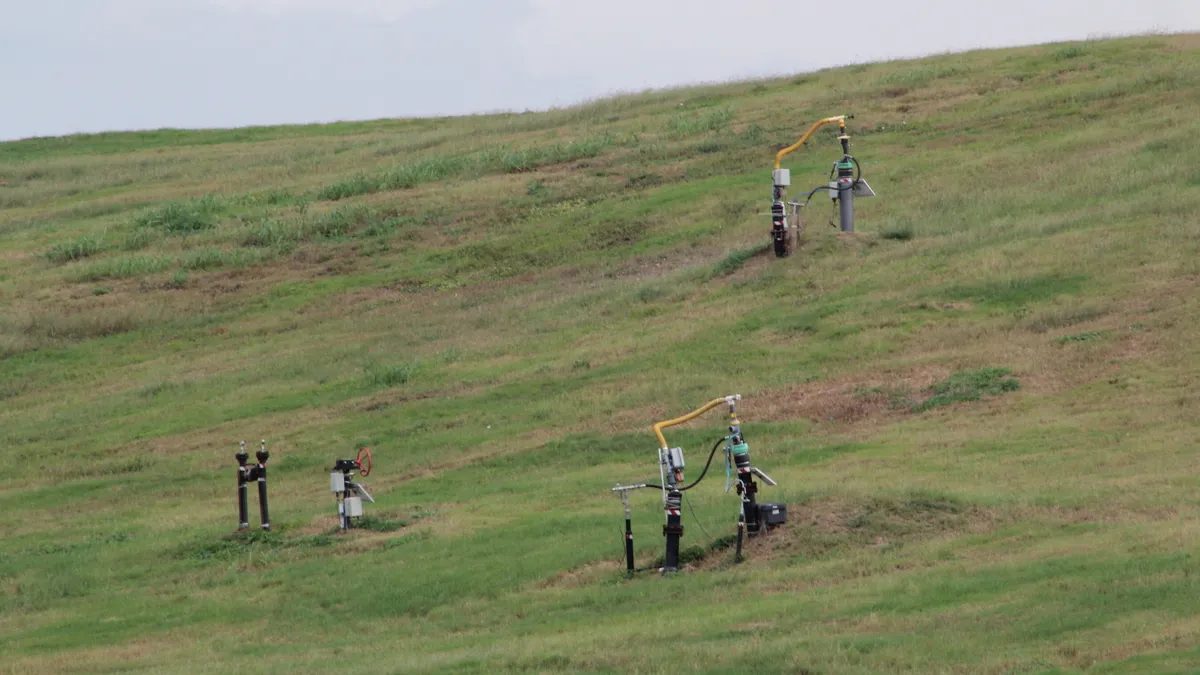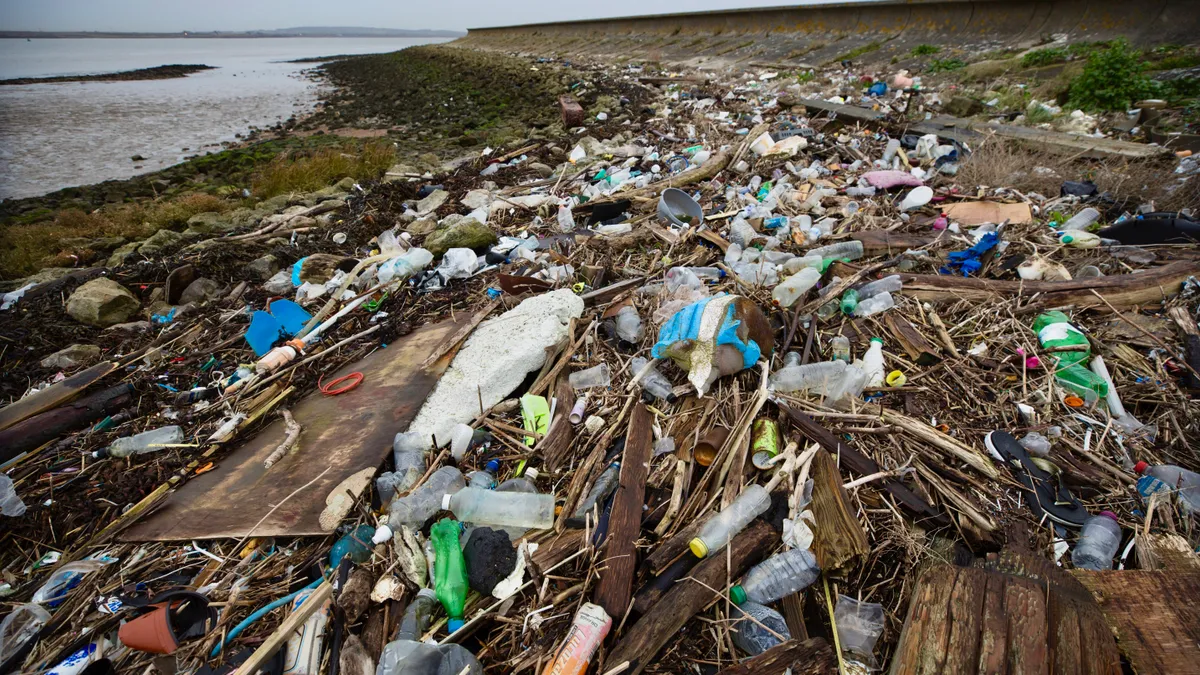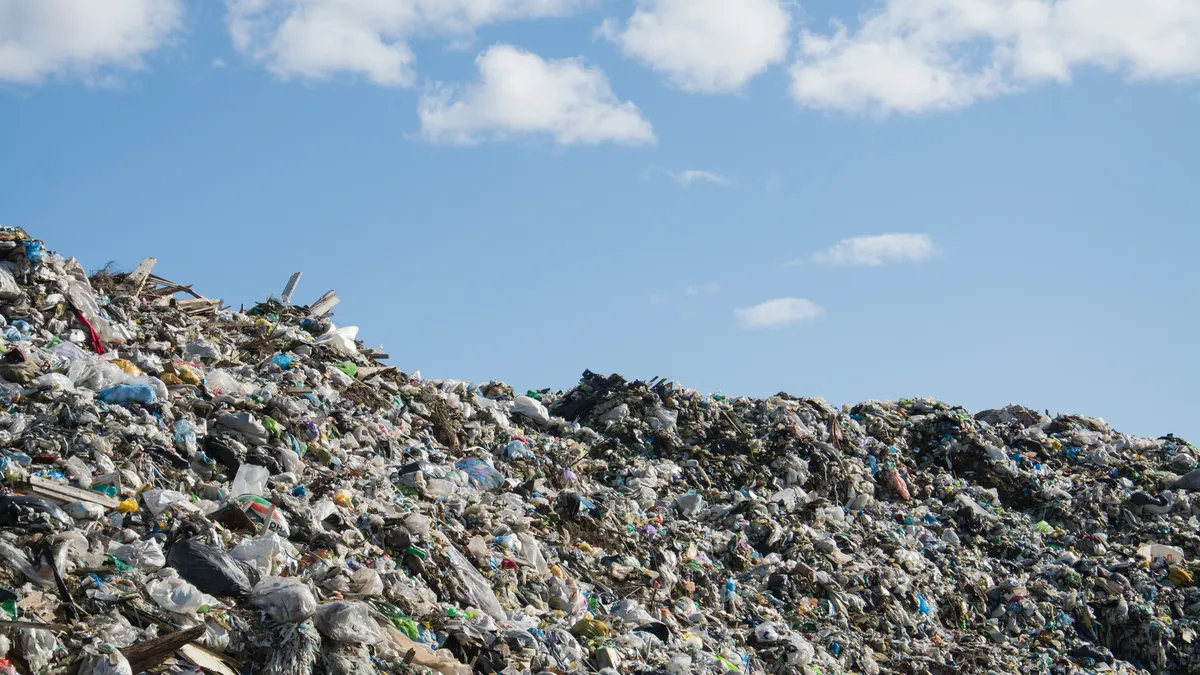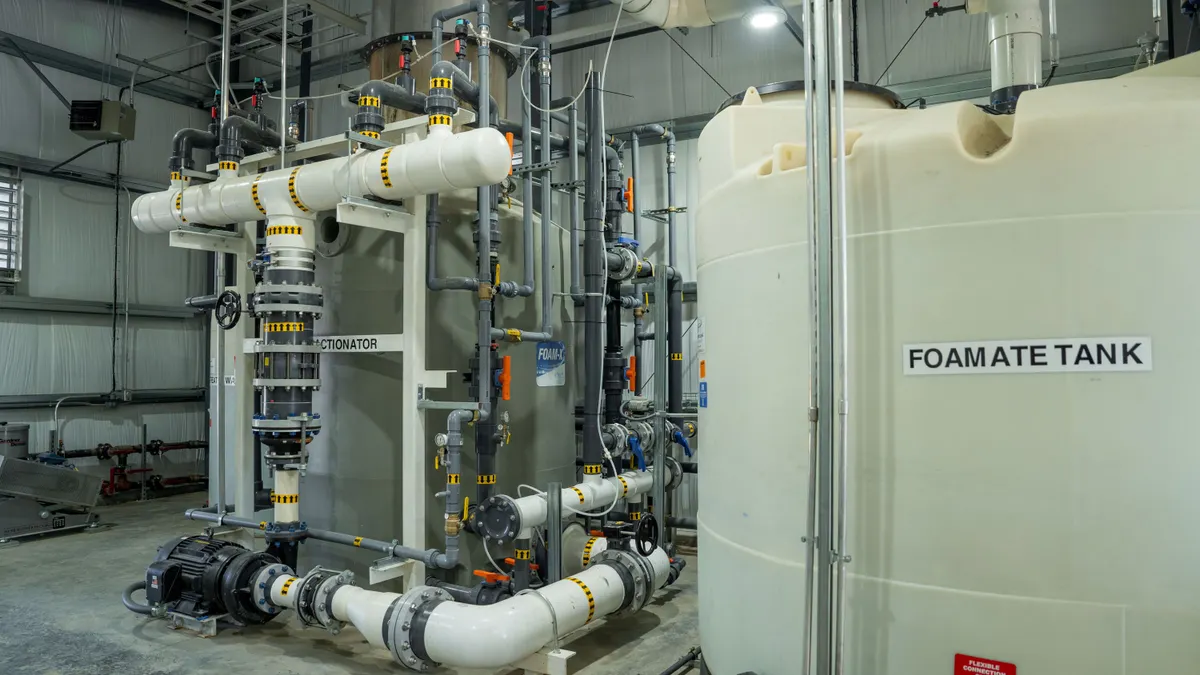Landfill operators in the United States have reduced overall emissions by roughly 45% since regulations first passed in the 1990s, according to U.S. EPA data. But more can be done, vendors and speakers said at the Solid Waste Association of North America's WASTECON show last week.
The event, which featured panel discussions on a range of topics, included a discussion of the human influence on climate change from John Nielsen-Gammon, a climatologist at Texas A&M University and director of the Southern Regional Climate Center. Nielsen-Gammon said the waste industry can play a role in mitigating climate change, but that it will take "a lot of imagination" to advance solutions.
Amy Lestition Burke, the CEO and executive director of SWANA, said the session was a reminder that the waste and recycling industry has a "vital role to play" in impacting climate change. She also said a changing climate will have impacts on operations, equipment, training, budgets and more for its members.
"We want to be on the offense, and to do that, we need to be prepared with information and data," Burke said in an emailed statement following the event. "These preparations tie into SWANA’s goals to make the industry safer and to be climate champions.”
Landfills represented 71.8% of the waste industry's total emissions in 2022, according to the EPA, and as such represent the biggest target for reductions. Awareness of fugitive emissions has risen at the same time as demand for energy has grown rapidly in the U.S., making capturing landfill gas not only important from a climate perspective but attractive as a revenue driver.
That demand growth is driven in part by the need for data centers, Bryan Black, co-founder and CEO of landfill-gas-to-energy company Nodal Power, said during a panel. He said that while electricity demand has historically grown slowly, the rise of artificial intelligence and other resource-intensive technologies has caused a rapid increase in demand for more energy.
“Ultimately there's a lot of [energy] sources that are going to be required to meet that need,” Black said. Increased energy prices as a result of that market imbalance have made gas capture lucrative.
Qnergy, a company that's fresh off a successful demonstration at a landfill in Weber County, Utah, hopes it can provide emissions abatement at the beginning and end of a landfill's life.
Isaac Garaway, the company's chief technology officer, said Qnergy's Stirling engine system has worked effectively in the oil and gas sector for years. But the company has found a new use case for the technology — converting landfill methane that's "highly corrosive, wet and pretty much useless for other technology" into energy via a modular, scalable system.
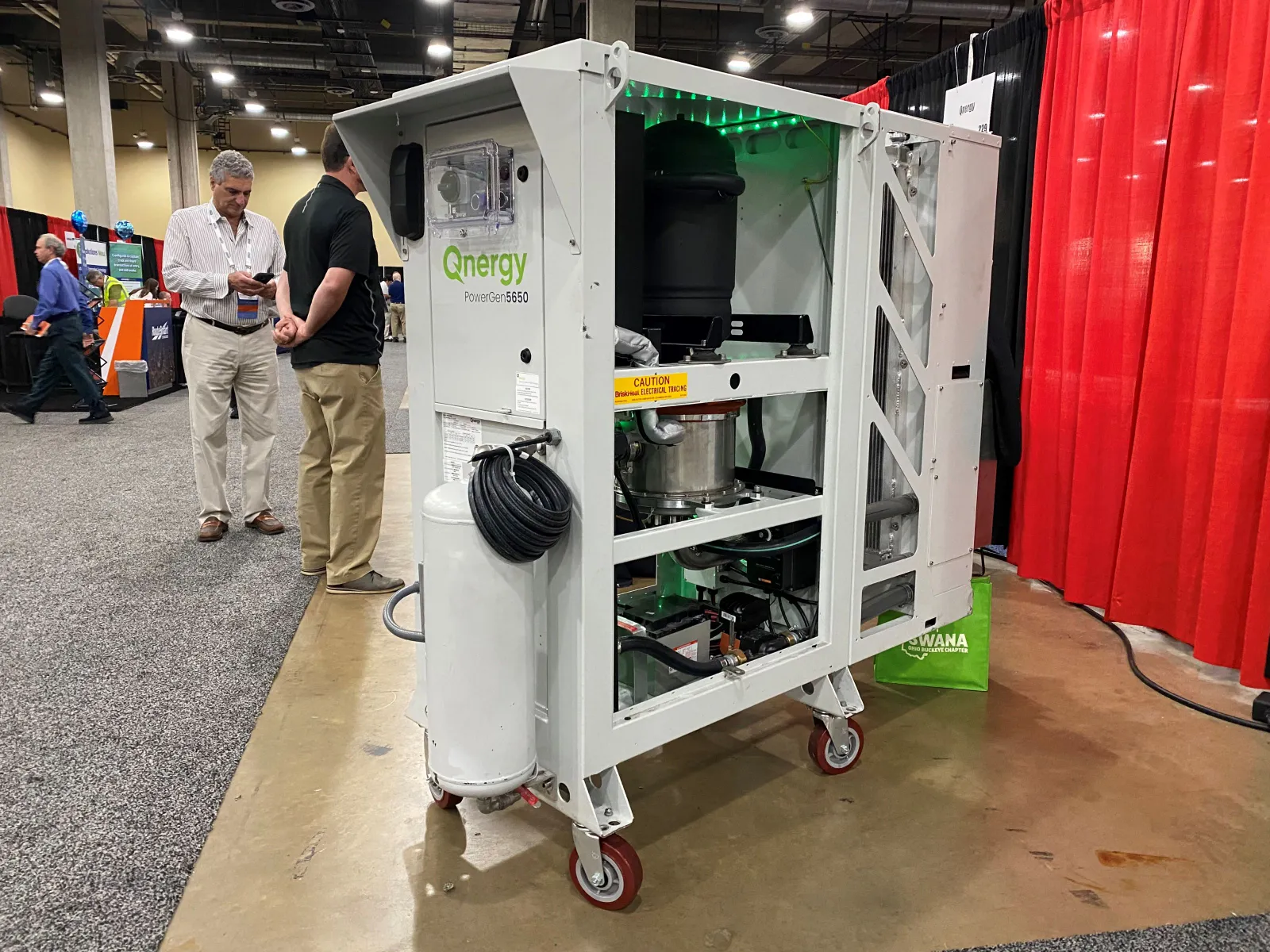
Through a demonstration project in Maryland, Qnergy has fine-tuned its system for landfill gas specifically, creating a version of its technology that is capable of managing the variability of gases arising from landfills. The company plans to launch its standalone system for landfills later this year, Garaway said.
Garaway said the technology turns something that was formerly a liability for landfill operators — the emissions released before landfill gas collection systems are installed or after the gas from a closed landfill becomes too dirty for traditional systems — into an opportunity to generate revenue via carbon credits. The company is willing to partner with public landfill owners to install a full gas collection system and operate it. It can also sell its technology to private landfill owners who just want to incorporate the technology into their existing systems, depending on each landfill's needs.
Another company, LoCI Controls, is also working to address landfill emissions with more modern technology. The company's monitoring system attaches to landfill gas wells and can adjust to changes in the composition of landfill gases in real-time. That has made the technology particularly useful for companies refining landfill gas into renewable natural gas. Such systems can only tolerate slight changes — less than 1% — in the relative oxygen content of landfill gas as it enters their RNG refining plants. LoCI's systems can detect such changes and adjust the vacuum in individual wellheads that may be sucking up too much oxygen from the landfill, potentially saving downtime for the plant.
Dave Hostetter, a vice president at SCS Engineers, said well monitoring technology can reduce labor costs by removing the need for engineers to investigate faulty wellheads in person. Instead, personnel can be redirected to addressing issues quicker and making gas collection systems as efficient as possible.
“That person that was doing it can now do something more productive,” Hostetter said. “We're trying to really leverage technology to get better results at your facility.”



